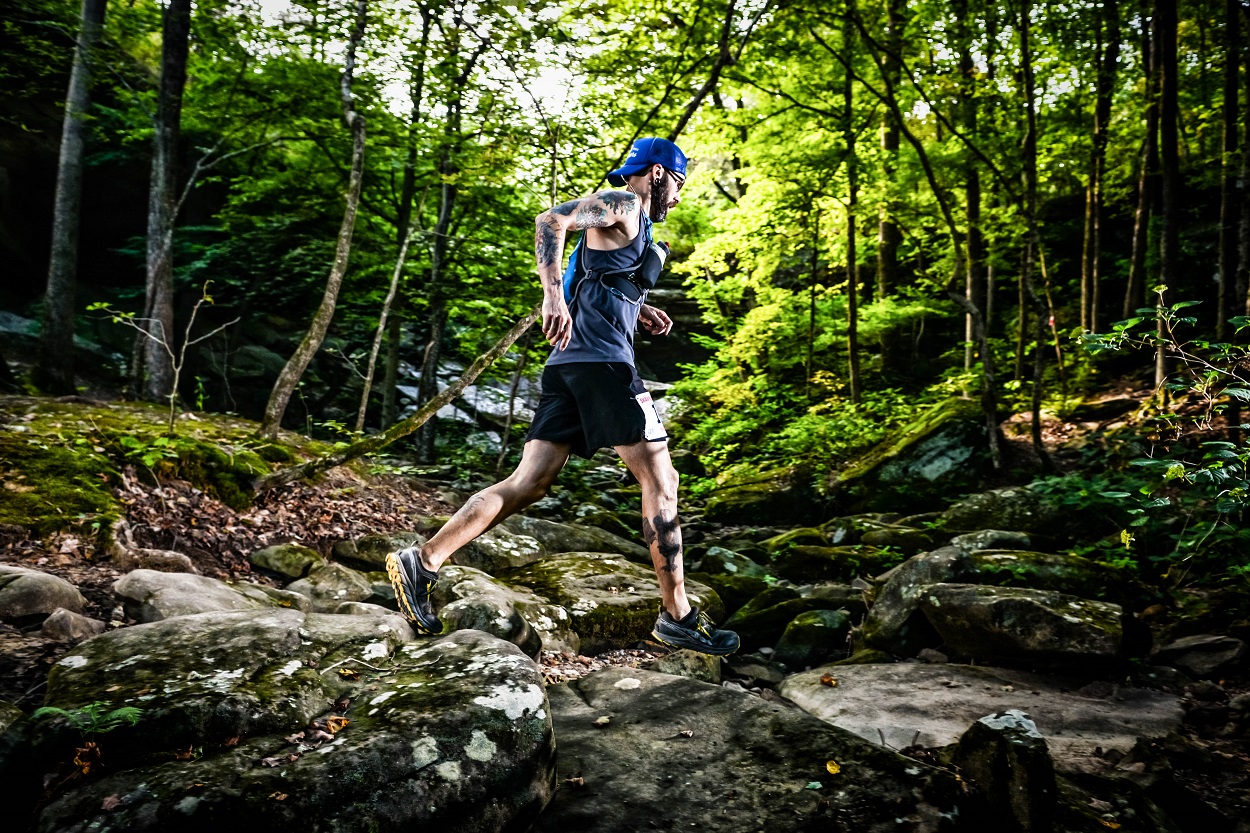Heepwah is a Native American word that means “all is good.” It also happens to be the buzzword at Camp Ondessonk in Ozark, Ill., home of the new Shawnee Hills 100, replacing everything from “yay” or “huzzah” to “oh cool” or “RIGHT ON!” Each person to register for the Shawnee Hills 100-mile, 100k or 50k earned a “Heepwah” on the event’s Facebook page, and I was one of them.
When I signed up for the race, which would take place on August 26-27 in southern Illinois’ Shawnee National Forest, my first inclination was to focus hard on heat training. After all, a typical summer day here in the hub of the heartland can reach temperatures well above 90, with humidity percentages to match. Calling the weather “oppressive” is being kind.
Even as race week arrived and the highs parked themselves in the 80s, I was cautious. Things could still get ugly quick. Not so. Race directors Shalini Kovach and Jerod Thornton dialed up a glorious weekend for all the runners, volunteers, crew and family.
The Shawnee Hills course was a 33-mile figure-eight through the trails and fire roads surrounding Camp Ondessonk. The camp itself features a large dining hall, open-air “treehouses” that sleep eight or more, lakes for swimming and myriad other outdoor activities for family and friends to enjoy while waiting on their runner. I probably I wasn’t the only person who tried to channel Rudy the Rabbit from the movie “Meatballs” during their weekend.
While both the 100-mile and 100k runners started at 6 a.m. on Saturday, August 26, the former had to begin by running the 2-mile gravel loop around the camp before hitting the trails. The 50k runners started an hour later. After a week of marking and intense maintenance by Shalini and Jerod, the trails were in nearly perfect condition — just begging for some fast times. However, we seasoned Midwesterners know that, while we don’t have many extended climbs, the multitude of small ups and downs can really take a toll if you don’t control your pace.
Each section of the course seemed to have something special for the runners: magnificent rock formations (many with climbers attached), the Tin Whistle (a drain pipe large enough for equestrians with train tracks above), numerous waterfalls (then dry, but not hard to imagine flowing during a wetter season), high bluffs and levees, and a suspension bridge reminiscent of Indiana Jones. The one thing consistent for all the sections was the massive amount of gravel and ankle-breaker rocks. I can’t prove it, but I really think the race crew brought in more rocks during each loop.
Another unfortunate consistency in the inaugural race was vandalism/removal of course markings by others trail users (hikers, equestrians and/or ATVers) during the weekend. But if there’s one word to describe ultrarunners, it would be “resilient.” While the race directors and volunteers worked tirelessly to replace the missing markers, we runners battled on.
After keeping time with her husband, Todd, for 60 miles (he eventually dropped because of foot issues), Emily Bello from Louisville, Ky., picked up a volunteer pacer and went on to claim the overall 100-mile win, passing first male Michael Eriks a few miles from the finish. I’m pretty sure the ideal weather conditions contributed to the 70-percent finishing rate for the 100-milers.
For the 100k, 50-year-old Paul Geist of Charlotte, N.C., held off Brandon Sullivan from Nashville to claim the overall title. Chicagoan Shannon Chehade was less than 40 minutes behind, winning the women’s top spot.
The always consistent Zdenek Palecek took the 50k win. Mary Nienaber was third overall and won the women’s race by one second over Katie O’Donnell. The ladies claimed six of the top 10 spots for the 50k.
My first loop in the cool morning felt pretty relaxed and Rudy-like, running just behind the Bellos. The afternoon heat and relentless rocks began to take their toll on the second loop. However, a few of the 100-mile leaders had either dropped or went off course, placing me in the lead (not a position I’m accustomed to be in).
Stomach issues and sleep deprivation slowed me down on the third loop, compelling me to tap a nap shortly after sunrise. A few “magic” pancakes from the Cedar Road aid station, though, and I was off to the races again.
With only about 3 miles remaining, I was passed by the hard-charging Dale Leonard to knock me off the final podium spot. I finished my second 100-miler ever in 29:39 — good for first in the male 40-49 age group.
With an amazing course, super-supportive volunteers, and directors that are passionate about delivering the best race possible, this endurance event needs to be on your schedule for 2018. I can’t guarantee the weather will be as nice, though.
Heepwah!
Author: Tim Landewe
Photo: Rick Mayo/Mile 90


[…] Race Report: Shawnee Hills 100 – Tim Landewe […]